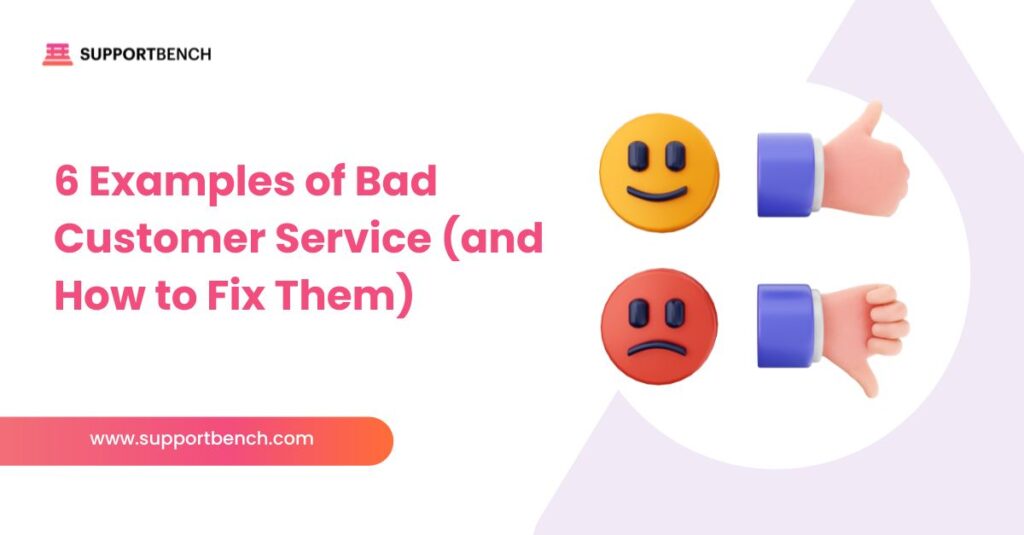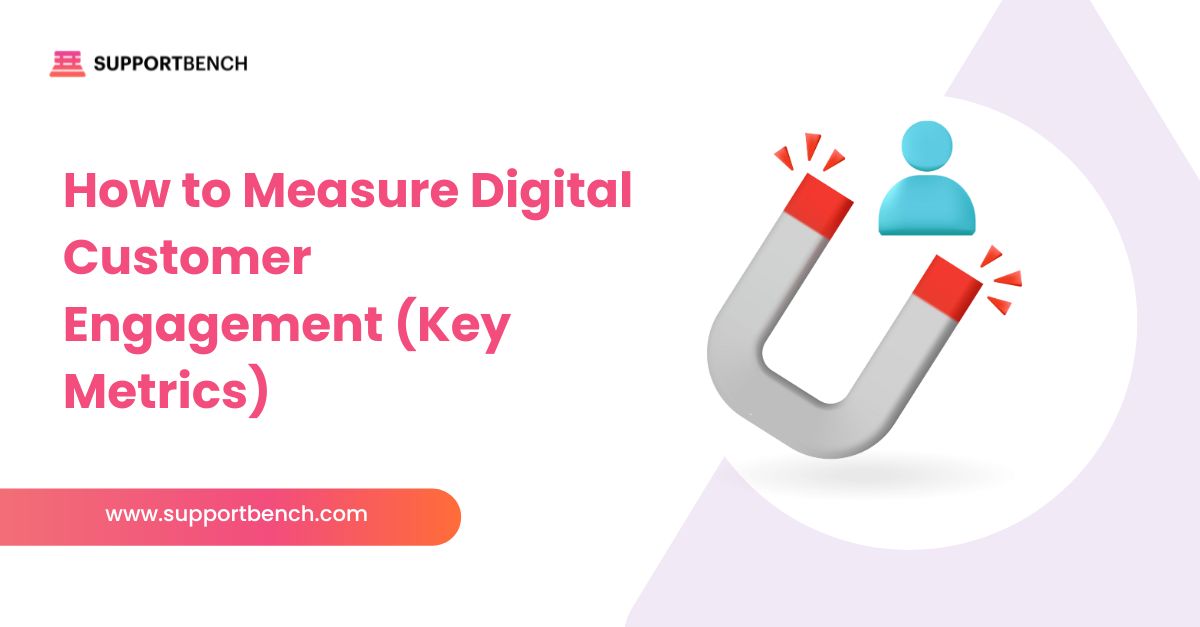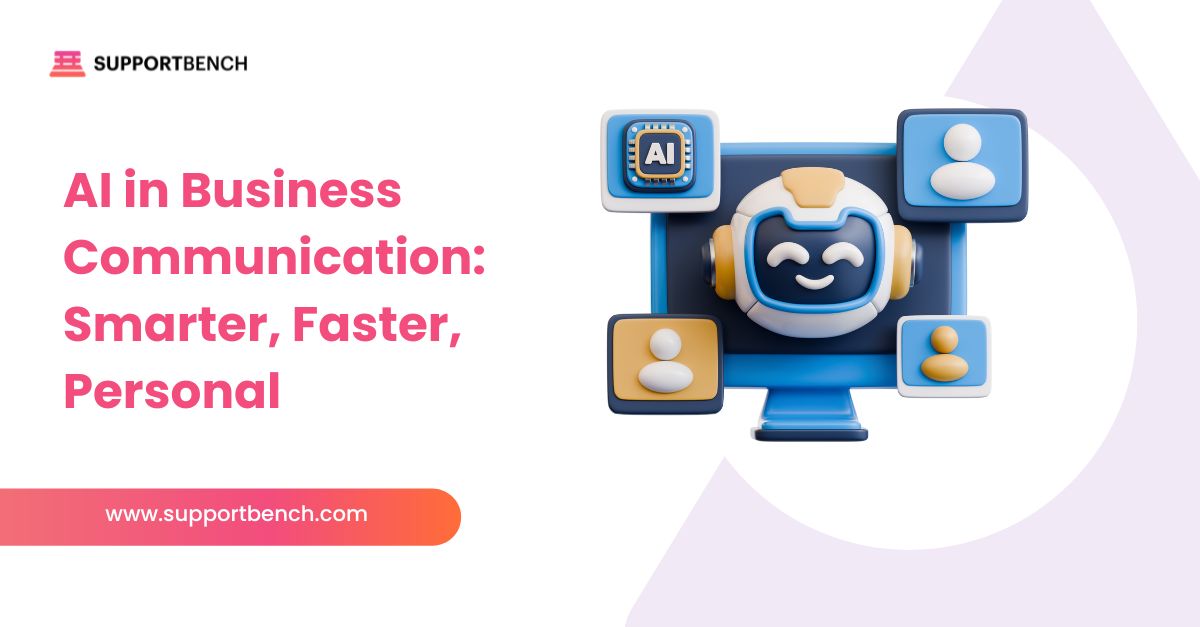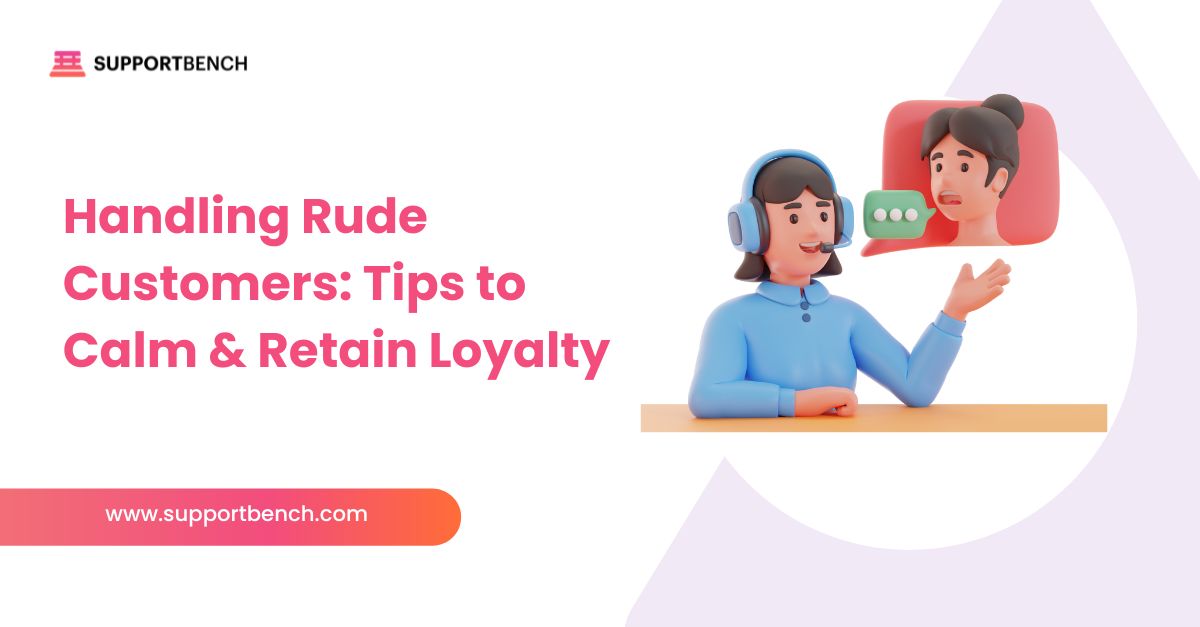Bad customer service isn’t just a single mistake. It’s a pattern of friction, miscommunication, and lack of care that frustrates customers and damages a company’s reputation.
It happens when issues like long wait times, inconsistent communication, and poor problem-solving occur repeatedly.
The result is lower trust, reduced loyalty, and declining performance across key metrics such as Net Promoter Score (NPS), customer service KPI like Customer Lifetime Value (CLV), and retention rates.
Understanding these failures is the first step toward fixing them. Below are common examples of bad customer service, their underlying causes, and practical solutions.
At a Glance:
Bad customer service erodes trust, frustrates customers, and drives them away, leading to lower retention and higher costs. Common problems include long wait times, rude or unhelpful agents, generic responses, and inconsistent communication across channels. By using tools like Supportbench to centralize data, automate workflows, and personalize support, businesses can deliver faster, seamless, and more satisfying customer experiences.
Top Causes of Bad Customer Service
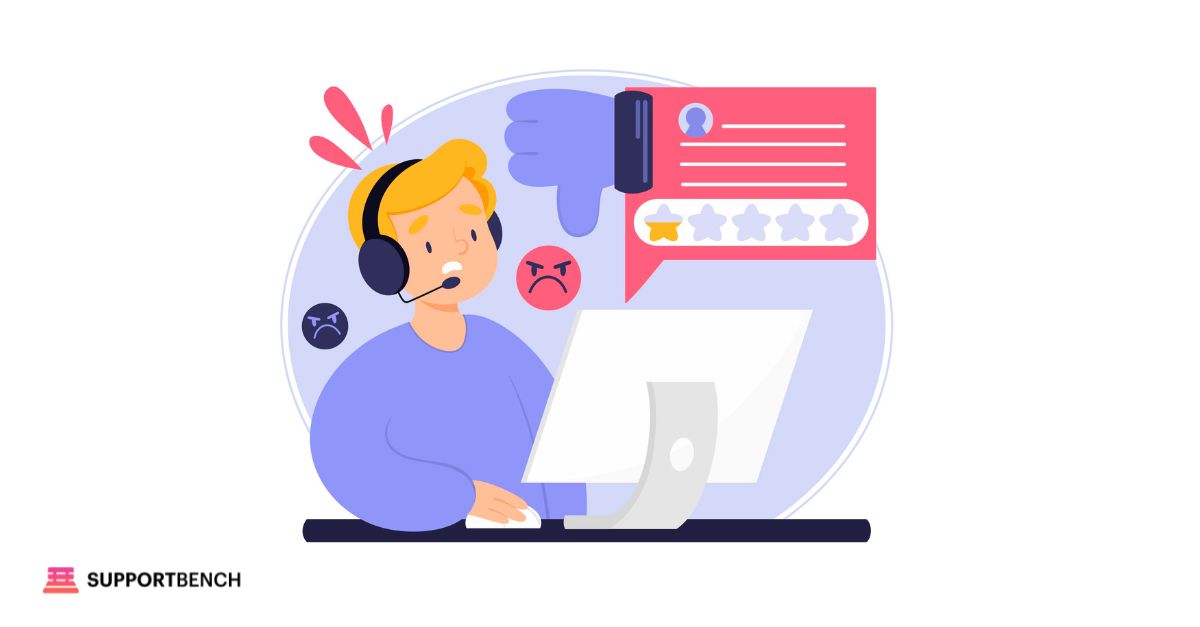
Top causes of bad customer service often include poor training, weak systems, and inconsistent processes, frustrate customers.
- Undertrained or overwhelmed staff
- Disconnected systems without a unified CRM
- Poor use of customer data, leading to generic interactions
- Lack of process consistency across teams and channels
- No clear accountability for issue resolution
While these problems are widespread, many of them can be resolved with the right approach and top customer support tools, such as Supportbench, which provides teams with a single view of the customer.
Example 1: Long Wait Times on Customer Support Calls
Customers are forced to wait on hold for extended periods, leading to frustration. Many will abandon the interaction entirely or turn to competitors, causing a drop in satisfaction scores.
Root Cause: Long queues are often caused by poor call routing, understaffed teams during peak hours, and the lack of automation for simple issues.
Solution:
- Use Supportbench’s AI-driven routing to connect customers to the right agent quickly, reducing bottlenecks.
- Offer call-back options so customers don’t waste time on hold.
- Track call data to schedule staff for peak periods.
- Build a self-service help centre with FAQs and tutorials to reduce unnecessary calls.
KPI Connection: Extended wait times directly lower NPS and First Contact Resolution (FCR) rates, signaling to leadership that customer satisfaction is at risk. Improving response times increases retention and lifetime value.
While long wait times frustrate customers, they’re usually the result of poor routing and disconnected systems—issues a unified platform like Supportbench can fix.
Example 2: Unhelpful or Rude Customer Service Representatives
When customers face rude or unhelpful agents, they feel disrespected. Negative interactions often spread quickly through online reviews or social media, damaging brand reputation.
Root Cause: This often stems from insufficient training, poor morale, or lack of feedback mechanisms for staff improvement.
Solution:
- Provide thorough training in communication, product knowledge, and conflict resolution.
- Implement a mentorship program for new hires.
- Use customer surveys to measure service quality and identify improvement areas.
- Foster a positive work culture to keep morale high.
KPI Connection: Poor interactions increase Customer Churn Rate and reduce Customer Satisfaction (CSAT) scores. High agent performance correlates directly with higher loyalty and retention rates.
Negative agent interactions are often a symptom of deeper process issues, and Supportbench provides visibility into agent performance through unified data, making it easier to coach and improve teams.
Example 3: Lack of Personalization in Customer Interactions
Generic responses make customers feel like just another number, reducing their willingness to engage with the brand long-term.
Root Cause: Disparate systems prevent agents from seeing the full customer history, making tailored responses impossible.
Solution:
- Use a centralized CRM like Supportbench to keep all interaction data in one place.
- Train agents to reference purchase history and past tickets to tailor responses.
- Implement personalized follow-ups and targeted solutions.
KPI Connection: Lack of personalization lowers Customer Lifetime Value (CLV) and decreases conversion rates for upsell opportunities.
Personalization requires access to complete customer data—something Supportbench delivers by consolidating information across channels.
Example 4: Inconsistent Service Across Channels
A customer receives conflicting information across phone, chat, email, and social media. This confusion makes the company seem unreliable.
Root Cause: Data silos prevent teams from sharing information, creating a fragmented view of the customer journey.
Solution:
- Adopt an omnichannel support strategy through Supportbench.
- Centralize customer records to ensure every agent has access to the same information.
- Create consistent policies and scripts for each channel.
KPI Connection: Inconsistency lowers NPS and FCR, and can reduce repeat purchase likelihood, a key driver of revenue growth.
Supportbench links every interaction across channels, ensuring a consistent customer experience from first contact to resolution.
Example 5: Inefficient Problem Resolution Process
Customers experience repeated delays or must contact support multiple times to resolve one issue, leading to frustration and higher operational costs.
Root Cause: Slow processes often result from unclear workflows, lack of automation, and agents needing approval for basic decisions.
Solution:
- Simplify workflows and remove bottlenecks.
- Allow agents to resolve common issues without escalation.
- Use a tiered support system to assign complex problems to experienced staff quickly.
- Provide customers with regular updates during the resolution process.
KPI Connection: Slow resolution times reduce CSAT scores, increase Cost per Support Ticket, and raise Churn Rate. Efficient resolution improves both satisfaction and profitability.
Supportbench’s automation tools help speed up resolutions by routing complex cases to the right agents and simplifying repetitive tasks.
Example 6: Transferring Customers from Agent to Agent
Customers are repeatedly transferred between agents, forced to explain their problem multiple times. This signals internal disorganization and wastes valuable time.
Root Cause: Poor call routing and lack of specialized teams make it difficult to resolve issues during the first contact.
Solution:
- Aim for First Contact Resolution (FCR) by equipping agents with complete customer histories.
- Review transfer rates to identify training needs and process gaps.
- Create specialized teams for handling specific types of issues.
KPI Connection: High transfer rates lower FCR, increase Average Handle Time (AHT), and decrease CSAT, all indicators of operational inefficiency.
Supportbench provides unified records, helping agents resolve issues on the first call and reducing unnecessary transfers.
How Poor Customer Service Affects Your Business
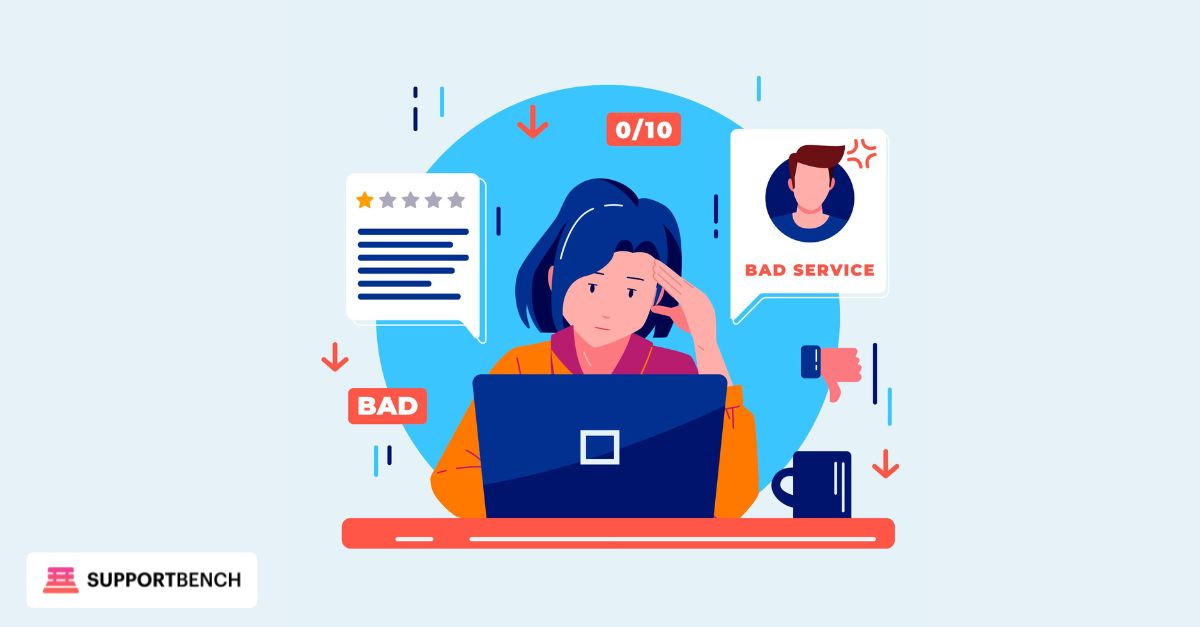
Poor customer service affects far more than individual interactions — it drives up costs, weakens loyalty, and limits long-term growth. Exceptional service, by contrast, improves retention, strengthens reputation, and fuels revenue.
Impact on Customer Retention
Negative experiences drive customers away, and acquiring new ones costs significantly more than retaining loyal, satisfied customers over the long term.
Damage to Brand Reputation
Bad reviews spread quickly online and offline, discouraging potential customers and hurting future acquisition efforts and trust in your business.
Lower Customer Lifetime Value (CLV)
Unhappy customers spend less over time and rarely make repeat purchases, reducing overall lifetime value and profitability significantly.
Increased Operational Costs
Repeated complaints, refunds, and customer issues increase overhead, requiring more resources to resolve problems caused by poor service.
Lost Sales and Revenue
Frustrated customers abandon purchases, skip upgrades, and reject upsell offers, directly reducing overall sales and business growth potential.
Supportbench’s unified platform reduces these risks by centralizing data and improving collaboration, leading to faster resolutions and happier customers.
How to Prevent Bad Customer Service with Technology
Technology plays a critical role in preventing bad customer service. A connected platform like Supportbench helps businesses:
- Train Your Team: Equip agents with tools that provide context during every interaction.
- Standardize Processes: Make sure customers receive consistent service across all channels.
- Adopt Smart Automation: Automate repetitive tasks, freeing agents to focus on complex problems.
- Improve Communication: Provide customers with real-time updates and status notifications.
- Personalize Every Interaction: Use complete customer histories to create meaningful, tailored experiences.
- Track and Measure KPIs: Monitor NPS, FCR, CES, CSAT, and other metrics to identify weaknesses and opportunities.
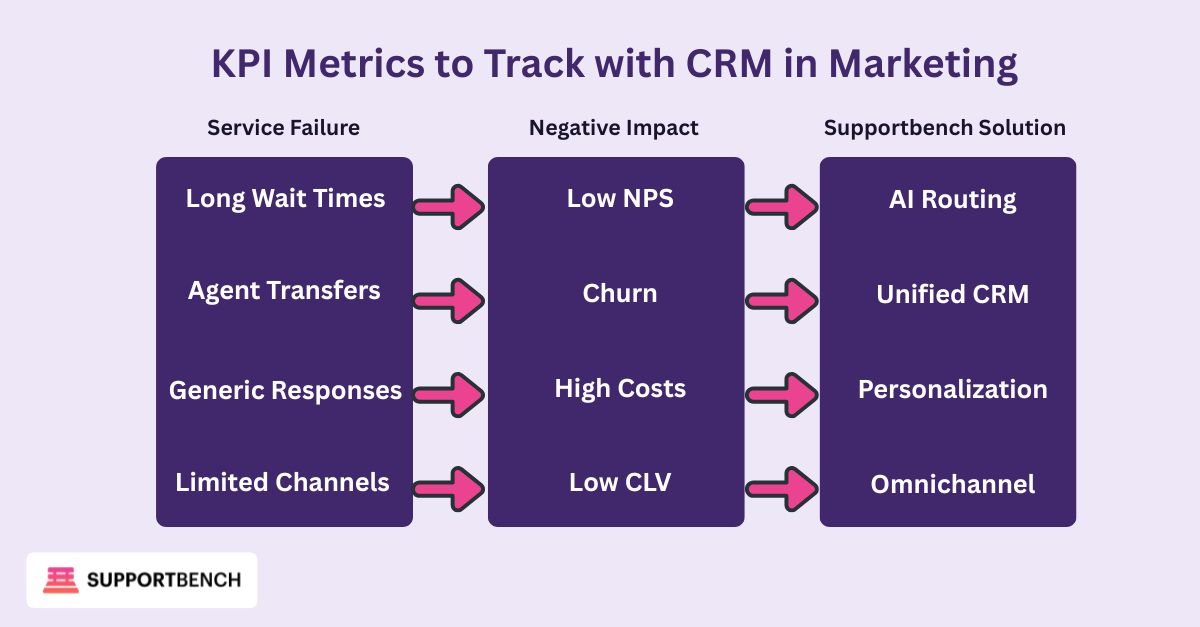
Conclusion
Bad customer service erodes trust and damages relationships. It reduces revenue and increases costs.
Connecting symptoms, causes, and solutions creates consistent, positive experiences.
Supportbench helps by centralizing customer data.
It unifies communication channels and streamlines workflows. With the right tools, every interaction feels seamless, and every customer feels valued.


